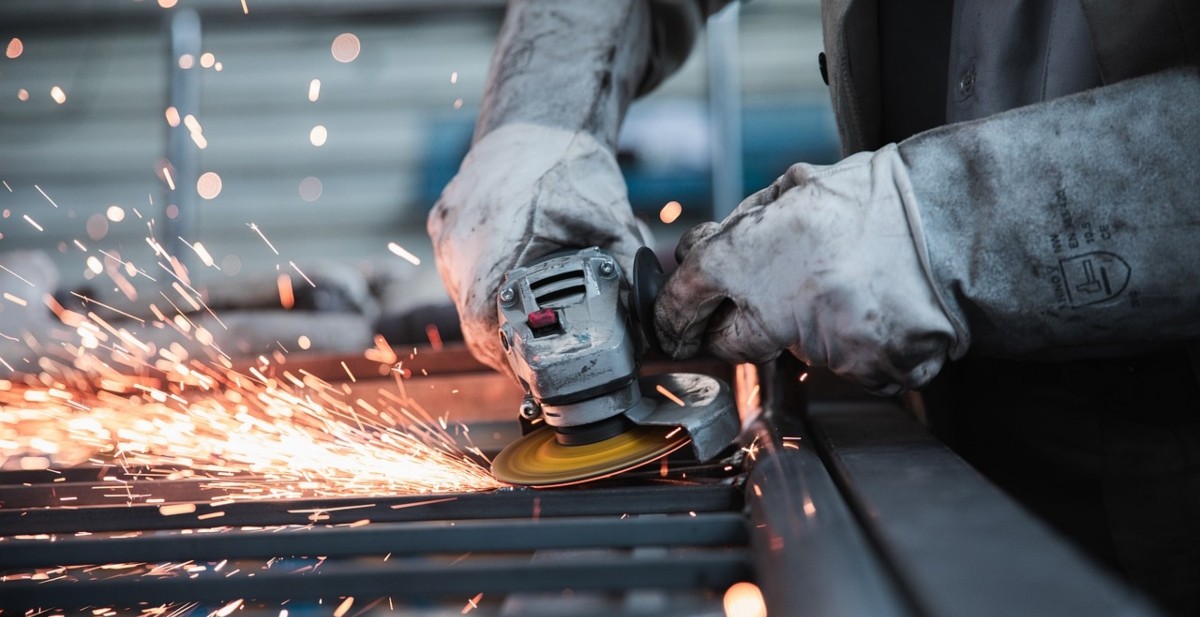Developed nations lead steel recovery charge

Steel prospects are promising for most of the world
But China left out of positive global demand growth
By Carly Fields
World steel demand is expected to surge 4.5% this year after near-zero growth in 2020. Steel traders and movers can then look forward to a further 2.2% growth in 2023, according to the latest Short Range Outlook from the World Steel Association (worldsteel).
The promising forecast hangs on two hooks: one, the continued positive progress of vaccinations across the world, and two, that the spread of Covid-19 variants will be less damaging and disruptive than seen in previous waves.
Commenting on the outlook, Saeed Ghumran Al Remeithi, chief executive of Emirates Steel and chairman of the worldsteel Economics Committee, said: “2021 has seen a stronger than expected recovery in steel demand, leading to upward revisions in our forecast across the board except for China. Due to this vigorous recovery, global steel demand outside China is expected to return earlier than expected to its pre-pandemic level this year.”
However, there are risks to the forecast, namely “persistent rising inflation, continued slow vaccination progress in developing countries and further growth deceleration in China”, said Al Remeithi.
While China sustained its strong pandemic recovery in the early part of this year, that growth has slowed since June. This has been marked by deceleration in the steel using sector's activity since July, which led to a steel demand contraction of -13.3% in July and then -18.3% in August, said worldsteel. A slowdown in the real estate sector and a government cap on steel production combined to pull back steel demand growth.
Worldsteel expects Chinese steel demand growth to be negative growth for the rest of 2021, leading to a predicted decline in overall steel demand of -1.0% in 2021 and zero growth in 2022.
Developed promise
Developed countries are carrying the prediction of increased global steel demand with worldsteel forecasting a rise in steel demand of 12.2% in 2021 and 4.3% in 2022 for these countries – marking a return to pre-pandemic levels.
“The developed economies have outperformed our earlier expectations by a larger margin than the developing economies, reflecting the positive benefit of higher vaccination rates and government support measures,” said Al Remeithi.
Developed countries’ steel demand growth could have been higher if not for bottlenecks in the supply chain and a lag in the services sector.
The report notes potential upside for the US, if President Biden’s infrastructure stimulus programme is enacted, but this would not feed through until late 2022.
In the EU, all steel-using sectors are displaying a positive recovery despite continuing waves of infection, said worldsteel. In particular, Germany’s steel demand recovery is being supported by strong exports, while Italy is recovering faster than other EU countries, with strong recovery in construction.
While developed Asia has suffered from deteriorating Covid situations, the recovery in steel demand has not, so far, been interrupted.
This has led worldsteel to revise up its steel demand forecast from this region. Japan and South Korea are both highlighted for their civil construction and engineering programmes which are underpinning strong steel demand. Also flagged is the jump in new ship orders for South Korea in 2021, which will boost the country’s steel demand for the coming years.
Ups and downs
Developing economies, excluding China, will also see continued recovery in steel demand in 2021, supported by a recovery in commodity prices and in international trade. However, worldsteel notes that new waves of Covid-19 infections combined with low vaccination levels and a slow recovery in international tourism could restrain developing economies.
India was on track for a strong recovery until a more severe second Covid-19 wave hit in April-June 2021, causing output across all sectors to fall. However, worldsteel noted that the economic impact of the second wave was much less severe compared with the first wave, due to more localised lockdowns. “Since July, a healthy recovery has resumed for all sectors. As a result, India's steel demand suffered only a minor downward revision and will show a strong recovery in 2021. India’s steel demand will reclaim the 100 million tonnes mark this year,” noted the Short Range Outlook. Vietnam also faces a scaled-down outlook for 2021 due to surging infections.
On the upside, the Philippines has managed to implement construction projects despite the Covid restrictions.
In Latin America, excluding Brazil, a “surprisingly strong recovery” has taken place in 2021 with construction, automotive and inventory rebuilding all calling for steel.
But there are caveats to the predicted rebound: high inflation, heightened fiscal deficits and political uncertainty could all weaken the steel demand growth outlook from this region.
Brazil, meanwhile, looks set for positive growth in 2021, driven by government stimulus and strong construction activity, said worldsteel. However, the 2022 outlook here is also marred by fiscal weakness, higher interest rates and political tensions.
Mixed bag
Looking to the Middle East, steel demand recovery in the Gulf Cooperation Countries did not match positive expectations in 2021. But recovering oil prices and positive Covid stories will underpin steel demand growth in 2022.
Elsewhere in the world, Russia’s steel demand recovery is supported by a strong rebound in the automotive sector and government mortgage subsidy support for the construction sector, while Turkey is expected to continue to show high double-digit steel demand growth in 2021, driven by infrastructure projects and industrial activity.
“While the manufacturing sector’s recovery remained more resilient to the new waves of infection than expected, supply-side constraints led to a levelling off of the recovery in the second half of the year and are preventing a stronger recovery in 2021,” concluded Al Remeithi. “But with high backlog orders combined with a rebuilding of inventories and further progress in vaccinations in developing countries, we expect steel demand will continue to recover in 2022.”